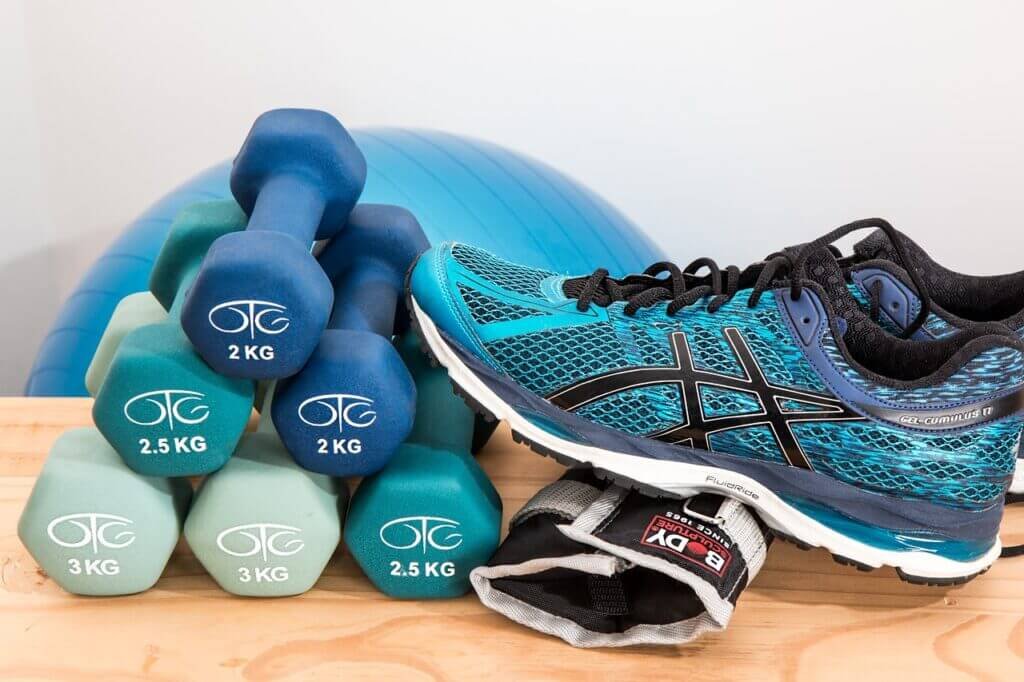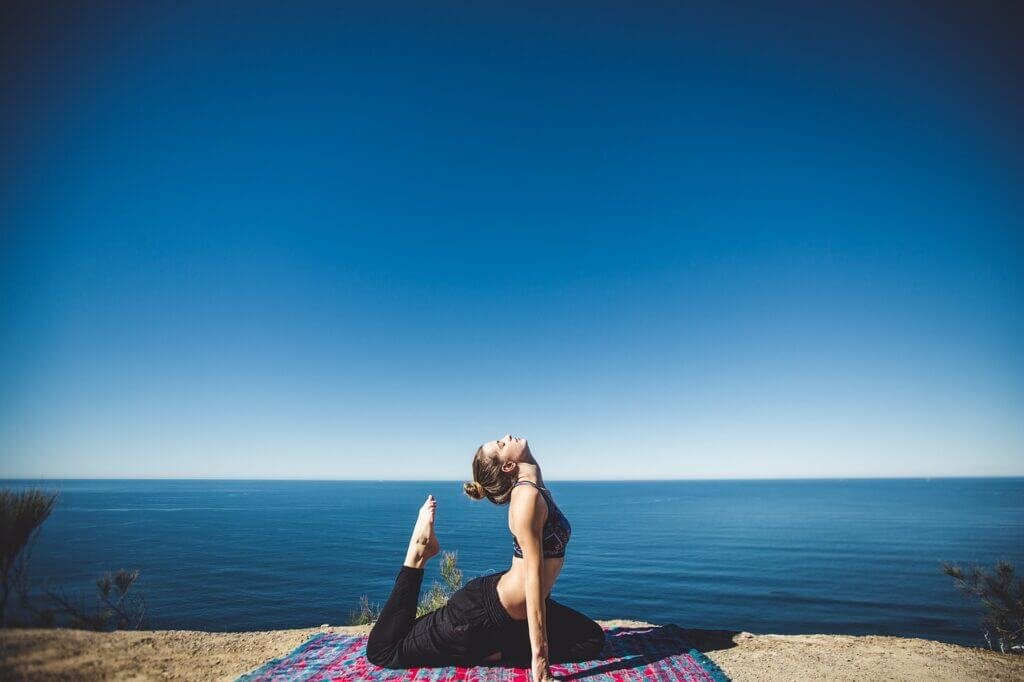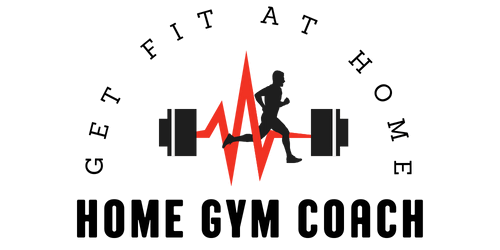Are you looking to improve your core strength from the comfort of your own home? Look no further! In this article, you will discover the top home gym exercises that will help you strengthen your core muscles and achieve your fitness goals. Whether you are a beginner or a seasoned fitness enthusiast, these exercises are perfect for you. Get ready to feel the burn and see amazing results with these effective and convenient workouts. Get ready to transform your home gym routine and take your core strength to the next level.

Importance of Core Strength
Having a strong core is not only beneficial for your appearance but also plays a crucial role in maintaining overall physical fitness. The core muscles, consisting of the abdominals, obliques, lower back, and pelvic muscles, provide stability, balance, and support to your body. A strong core helps improve posture, prevent injuries, enhance athletic performance, and even relieve back pain. Whether you’re a fitness enthusiast or simply trying to stay active at home, prioritizing core strength is essential for a well-rounded workout routine.
Benefits of Core Strength
Building core strength offers numerous benefits that extend beyond the aesthetic appeal of toned abdominal muscles. Strengthening your core not only enhances your physical performance but also helps in daily activities such as lifting heavy objects, maintaining balance, and improving posture. A strong core helps in efficient movement and reduces the risk of injuries, particularly in the back and hips. Furthermore, a strong core enhances overall stability, which is essential for activities such as running, jumping, and even walking.

Why Core Strength is Essential for a Home Gym Workout
When it comes to working out at home, focusing on core strength becomes even more critical. In the absence of gym equipment, core exercises provide a versatile and effective way to train your entire midsection. Core strength is the foundation for all other exercises, ensuring proper form, stability, and alignment. Whether you’re performing bodyweight exercises, using minimal equipment, or incorporating more advanced training methods, a strong core is a prerequisite for optimal performance and results in your home gym workouts.
Equipment for Core Exercises at Home
You don’t need fancy, expensive equipment to work on your core muscles at home. There are several minimalist equipment options and recommended equipment for more advanced training that can help you achieve a challenging and effective core workout.
Minimalist Equipment Options
If you’re just starting with core exercises and prefer to keep things simple, there are several equipment options that require minimal space and investment. An exercise mat or a comfortable surface, such as a carpeted floor, is all you need for most core workouts. Additionally, a stability ball can add versatility and challenge to various exercises, such as the plank and Russian twist, by engaging more muscles and increasing instability.
Recommended Equipment for Advanced Training
For those looking to take their core training to the next level, investing in a few key pieces of equipment can be beneficial. An ab roller wheel provides an intense workout for your abdominal muscles, particularly targeting the rectus abdominis. Resistance bands are also a versatile choice, allowing you to target different areas of your core using various resistance levels. Additionally, a pull-up bar or a set of gymnastic rings can be excellent additions, offering a wide range of core-strengthening exercises.

Basic Core Exercises for Home Gym Workouts
Whether you’re a beginner or an experienced fitness enthusiast, incorporating some basic core exercises in your home gym workouts is essential to build a solid foundation for your core strength.
Plank
The plank is a classic core exercise that targets the entire midsection, including the abdominals, lower back, and obliques. Start by assuming a push-up position with your forearms resting on the ground and your body in a straight line. Hold this position for as long as you can while maintaining proper form and engaging your core muscles.
Russian Twist
The Russian twist is a great exercise to target the obliques and improve rotational stability. Sit on the floor with your knees bent and feet flat on the ground. Lean slightly back, keeping your back straight, and lift your feet slightly off the ground. Hold your hands together in front of your chest and twist your torso from side to side, touching the ground on each side.
Superman
The Superman exercise focuses on strengthening the lower back muscles. Lie facedown on the floor with your arms extended overhead. Simultaneously lift your arms, chest, and legs off the ground, forming a “superman” shape with your body. Hold for a few seconds, lower, and repeat.
Bicycle Crunches
Bicycle crunches are an effective exercise for targeting the rectus abdominis and obliques. Lie on your back with your knees bent and hands behind your head. Lift your shoulders off the ground and bring your right elbow to your left knee while straightening your right leg. Alternate sides in a pedaling motion, as if riding a bicycle.
Bird Dogs
Bird dogs are excellent for improving core stability and balance. Begin on your hands and knees, with your hands directly below your shoulders and your knees below your hips. Extend your right arm forward while simultaneously extending your left leg backward. Hold for a few seconds, return to the starting position, and repeat on the opposite side.
Intermediate Core Exercises for Home Gym Workouts
Once you have mastered the basic core exercises and built a solid foundation, it’s time to progress to intermediate exercises that challenge your core strength even further.
Leg Raises
Leg raises are a challenging exercise that targets the lower abdominal muscles. Lie flat on your back with your arms by your sides and legs straight. Keeping your legs together, lift them off the ground until they are perpendicular to the floor. Slowly lower them back down without letting them touch the ground, and repeat.
Mountain Climbers
Mountain climbers are a dynamic core exercise that also provide cardiovascular benefits. Start in a plank position with your hands directly below your shoulders. Bring one knee toward your chest, then quickly switch, bringing the opposite knee toward your chest. Continue alternating legs in a running motion.
Side Plank
The side plank is an excellent exercise for targeting the obliques and improving lateral stability. Start by lying on your side with your elbow directly below your shoulder and your legs extended. Lift your hips off the ground, creating a straight line from your head to your feet. Hold this position for as long as you can while maintaining proper form, then switch to the other side.
Dead Bug
The dead bug exercise helps improve coordination and stability while targeting the deep core muscles. Lie flat on your back with your arms extended straight up toward the ceiling. Bend your knees at a 90-degree angle, with your shins parallel to the floor. Slowly lower your right arm behind your head while simultaneously straightening your left leg, keeping them just above the ground. Return to the starting position and repeat on the opposite side.
Lying Windshield Wipers
Lying windshield wipers are a challenging exercise that targets the obliques and hip muscles. Lie flat on your back with your arms stretched out to the sides for stability. Lift your legs off the ground and slowly lower them to one side, keeping your upper body flat on the ground. Return to the starting position and repeat on the other side.
Advanced Core Exercises for Home Gym Workouts
For those who are ready to take their core strength to the next level, incorporating advanced exercises can provide a more intense challenge and further enhance core stability.
Hanging Leg Raises
Hanging leg raises are a highly effective exercise for targeting the lower abdominals and developing overall core strength. Hang from a pull-up bar with your arms fully extended and lift your legs up toward your chest, keeping them straight. Lower your legs back down slowly and repeat for the desired number of repetitions.
Dragon Flags
Dragon flags are an advanced core exercise that targets the entire midsection, particularly the rectus abdominis. Lie on a bench or a stable surface with your hands gripping the edge behind your head. Raise your legs and hips off the bench, keeping your body straight, and then lower them back down slowly.
Ab Wheel Rollouts
Ab wheel rollouts are a challenging exercise that engages the entire core, including the abs, obliques, and lower back. Start on your knees with your hands gripping an ab wheel or a stability ball. Slowly roll the wheel forward, extending your body as far as you can while maintaining control. Roll back to the starting position and repeat for the desired number of repetitions.
Wood Choppers
Wood choppers are a compound exercise that targets the obliques, hips, and shoulders. Stand with your feet shoulder-width apart and hold a dumbbell or a medicine ball with both hands. Start with the weight at one side of your body and raise it diagonally across your body, rotating your torso as you do so. Repeat on the other side.
Turkish Get-up
The Turkish get-up is a complex exercise that engages multiple muscle groups, including the core, shoulders, and hips. Start by lying on your back with a kettlebell or a dumbbell held above your shoulder. Stand up while keeping the weight extended overhead, then reverse the movements to return to the starting position. Repeat on the other side.
Circuit Training for Core Strength
Circuit training is an excellent way to maximize your core strength workout by incorporating different exercises in a structured, high-intensity format.
Creating Effective Core Circuits
When creating a core circuit, it’s crucial to choose exercises that target different areas of the core and vary the intensity and difficulty levels. Include a balance between stability exercises, such as planks and side planks, and dynamic movements, such as mountain climbers and bicycle crunches. Aim for a combination of exercises that challenge your core muscles from different angles and incorporate both strength and endurance components.
Sample Core Circuit for Home Gym Workouts
Here’s an example of a core circuit that can be performed at home:
- Plank – Hold for 30 seconds.
- Russian Twist – Perform 15 reps on each side.
- Bicycle Crunches – Perform 20 reps.
- Side Plank – Hold for 30 seconds on each side.
- Mountain Climbers – Perform 15 reps on each side.
- Leg Raises – Perform 12 reps.
- Ab Wheel Rollouts – Perform 10 reps.
Perform each exercise back-to-back with little to no rest between exercises. Complete the circuit for 2-3 rounds, resting for 1-2 minutes between rounds. Adjust the number of repetitions and duration based on your fitness level and gradually increase the intensity as you get stronger.
Tips for Safe and Effective Core Training at Home
While core training is essential for overall fitness, it’s important to approach it safely and effectively, particularly when working out at home.
Start Slowly and Progress Gradually
If you’re new to core training, start with basic exercises and gradually increase the difficulty and intensity as your strength improves. Rushing into advanced exercises without a proper foundation can lead to injuries and setbacks. Focus on proper form and technique to ensure maximum effectiveness and reduce the risk of injury.
Maintain Proper Form and Technique
Proper form is key to effective and safe core training. Pay attention to your alignment, engage the correct muscles, and avoid compensating with other body parts. If you’re unsure about the correct form, consider working with a qualified fitness professional who can guide you and provide feedback.
Listen to Your Body
Pay attention to any discomfort or pain during core exercises. While it’s normal to feel muscle fatigue and mild soreness, sharp pain or excessive discomfort may be a sign of incorrect form or overexertion. Listen to your body, modify exercises if needed, and consult a healthcare professional if you experience persistent pain or discomfort.
Include Rest and Recovery Days
Just like any other muscle group, your core muscles need time to rest and recover. Incorporate rest days between your core workout sessions to allow your muscles to repair and grow stronger. Overtraining can lead to fatigue, decreased performance, and increased risk of injuries.
Incorporating Core Exercises into Existing Home Workout Routines
To make the most of your home workouts and maximize the benefits of core training, integrating core exercises into your existing routines is crucial.
Full Body Workouts with Core Focus
If you’re following a full-body workout routine, consider adding core exercises as a dedicated section within your workout or as supersets with other exercises. For example, perform a set of squats followed by a set of bicycle crunches, then move on to another lower body exercise.
Upper Body Workouts with Core Integration
When focusing on upper body workouts, incorporate core exercises that target both the upper and lower abdominals, as well as the obliques. For instance, perform a set of dumbbell chest presses followed by a set of Russian twists, alternating between each exercise.
Lower Body Workouts with Core Engagement
During lower body workouts, choose core exercises that complement the lower body movements. For example, pair a set of lunges with a set of side planks to engage both your lower body and core simultaneously.
Additional Core Strengthening Strategies for Home Gym Workouts
In addition to traditional core exercises, there are other strategies and techniques that can further enhance your core strength and stability at home.
Pilates and Yoga for Core Strength
Pilates and yoga are both excellent disciplines for developing core strength and stability. Incorporate Pilates exercises and yoga poses that specifically target the core muscles into your home gym routine. Options include exercises like the Pilates hundred, yoga poses like plank, and core-focused flows.
Resistance Band Exercises
Resistance bands are a versatile piece of equipment that can add an extra challenge to your core exercises. Wrap a band around your feet or attach it to a stable anchor point to increase resistance during exercises such as Russian twists or bicycle crunches. The tension provided by resistance bands effectively engages the core muscles.
Functional Training Movements
Functional training incorporates movements that mimic activities of daily living and sports-specific actions. Opt for exercises that involve rotational movements, such as wood choppers, or dynamic movements like medicine ball slams, to improve core stability and strength in a practical way.
Conclusion
Core strength is a fundamental aspect of overall fitness and plays a vital role in your home gym workouts. It provides stability, balance, and support to your body during exercises and everyday activities. By incorporating a variety of core exercises into your home gym routine, progressing gradually, and maintaining proper form, you can significantly improve your core strength and reap the numerous benefits it offers. Remember to listen to your body, include rest days, and explore different strategies, such as circuit training and functional movements, to enhance your core training. With dedication and consistency, you can build a stronger, more stable core that will enhance your overall fitness and well-being.


